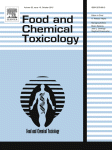Due to the improvement of living standards and increasing knowledge on the health promoting benefits of seafood consumption, the worldwide demand for fish and shellfish has been steadily increasing during the last decades (He et al., 2010), to reach 145.1 million tons by 2009 (FAO, 2010). Seafood constitute an important component of the so called Mediterranean diet and it has been demonstrated that the consumption of low to moderate amounts of fish would be associated with a significant reduction in total mortality (Trichopoulou et al., 2003).
Despite their key nutrients, including ω3 polyunsaturated fatty acids, essential amino acids, trace elements and vitamins fish and seafood are also the accumulators of substantial amounts of heavy metals posing a potential threat to human health (Catsiki and Strogyloudi, 1999, Leblanc et al., 2000, Llobet et al., 2003). Therefore, the public must be sufficiently informed prior to choosing whether to eat fish and shellfish, what species to eat, as well as at what size, what size portions and how often. Sound choices require adequate information about a wide range of species (Burger and Gochfeld, 2011). Although in most cases fish and shellfish are consumed cooked, the majority of studies related to the presence and the daily intake of trace elements through seafood consumption provide data obtained from uncooked/raw products (Domingo, 2011). Since heavy metal analysis in raw samples does not permit the calculation of heavy metals’ intake through seafood consumption, several attempts to study the effects of culinary practices on heavy metal concentrations in fish and seafood have been undertaken, like for example in African catfish (Ersoy, 2011, Ersoy and Özeren, 2009), sea bass (Ersoy et al., 2006), sea bass and red seabream (He et al., 2010), sardine, hake, and tuna (Perelló et al., 2008) and rainbow trout (Gokoglu et al., 2004). However, to our knowledge, no studies concerning the influence of cooking on trace metals content of small Mediterranean fish and shellfish have been carried out. In the present study we sought to evaluate the effects of different culinary practices on the concentrations of Cd, Cr, Cu, Fe, Hg, Ni, Pb and Zn in seven species of finfish and three species of shellfish (Table 1), which are among the most commonly marketed in the Aegean and Mediterranean Seas. The heavy metal concentrations of the cooked samples were compared to those determined in the raw ones. In addition, the dietary intake of essential metals, as well as the possible risk by the toxic metals Cd, Hg and Pb deriving by fish and seafood consumption were estimated and discussed.

